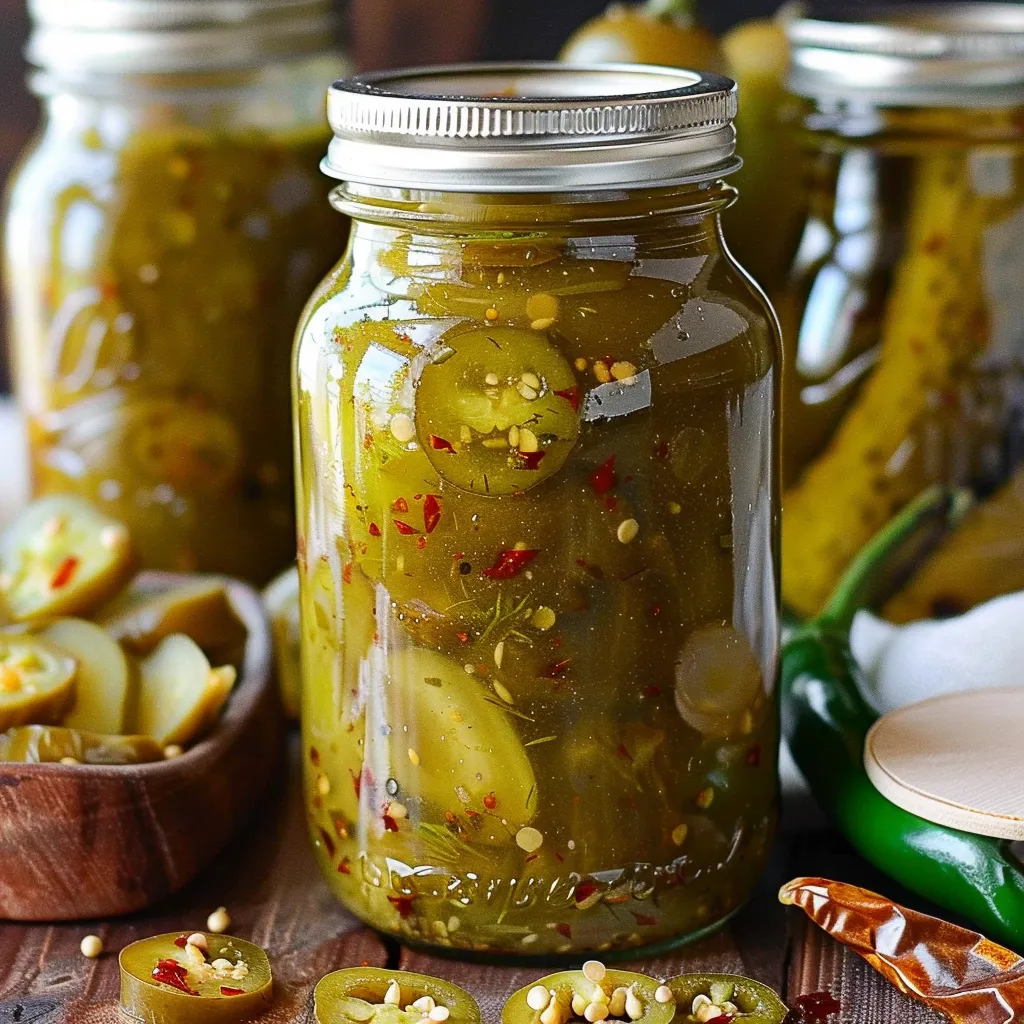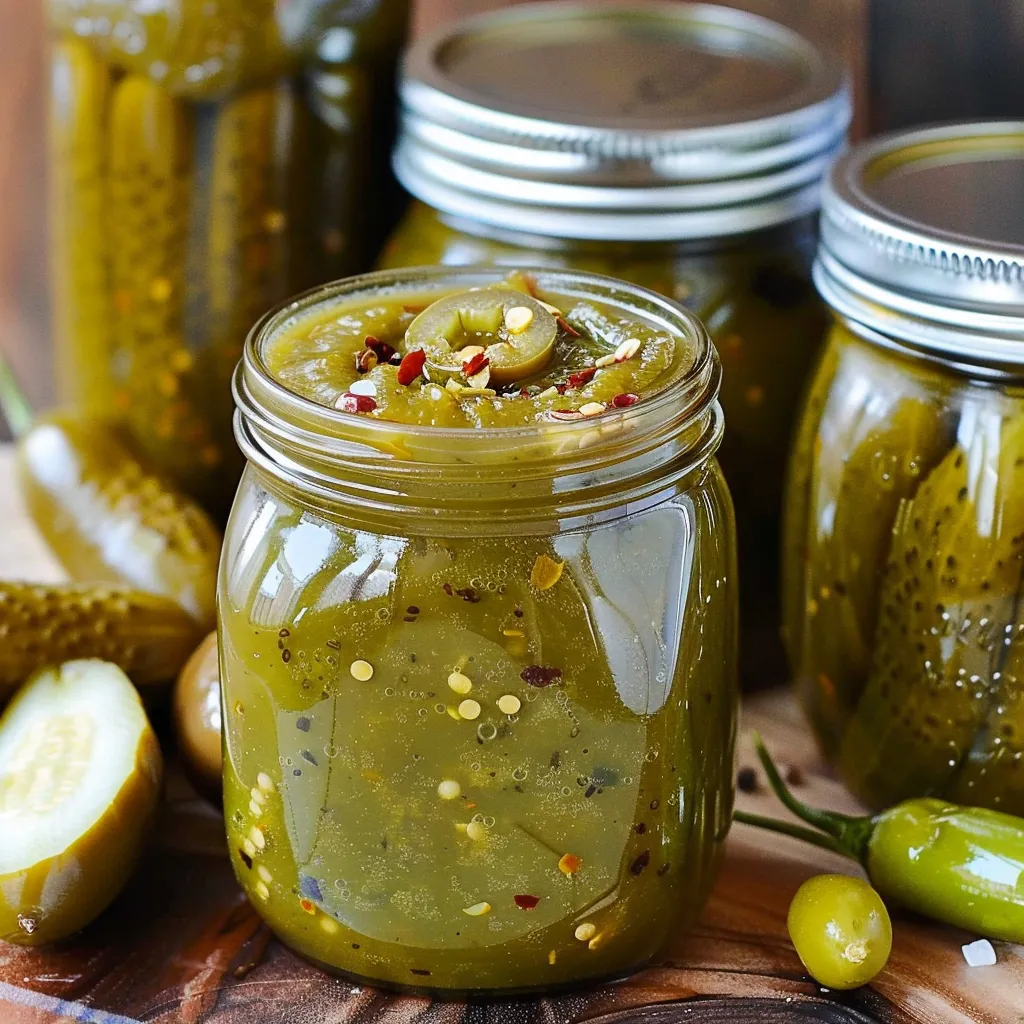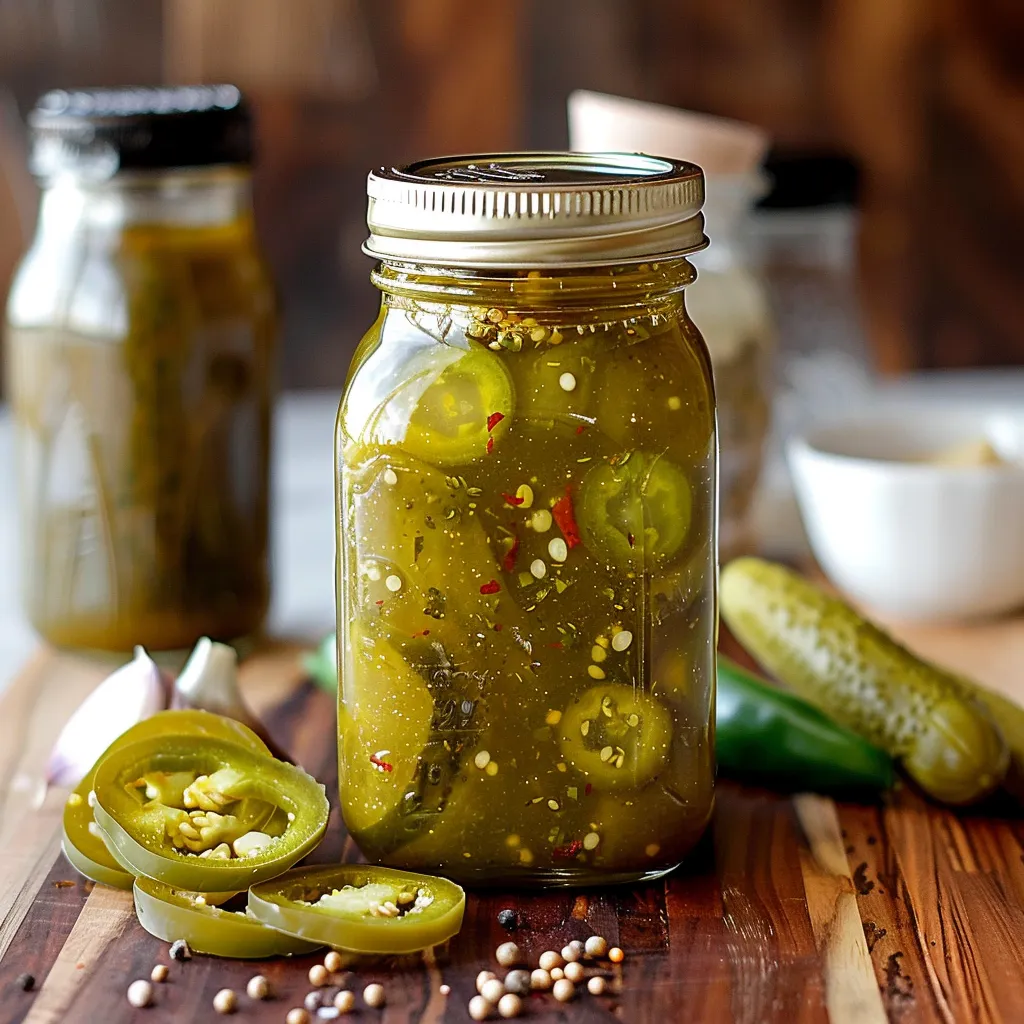 Pin it
Pin it
The moment you taste Dill Pickle Hot Sauce, you experience a flavor revelation – the familiar tang of dill pickles transformed by fermentation and brightened with the heat of fresh peppers. This unique condiment bridges the gap between hot sauce and pickle brine, creating something entirely new and addictive. I've been experimenting with fermented hot sauces for years, but this pickle-infused version has become a staple in my refrigerator, finding its way onto everything from morning eggs to late-night tacos.
Last summer, I brought a bottle to a neighborhood barbecue where it was initially met with skeptical looks. By the end of the evening, people were fighting over the last drops and requesting the recipe. The combination of pickle tang and pepper heat simply works in ways that surprise and delight even the most devoted hot sauce collectors.
Essential Ingredients and Selection Tips
- Hot Peppers: Jalapeños provide moderate heat, while serranos kick it up a notch. Use fresh, firm peppers with vibrant color. I often use a 3:1 ratio of jalapeños to serranos for balanced heat.
- Dill Pickles: Choose high-quality, naturally fermented pickles rather than quick-pickled varieties. Bubbies or other lacto-fermented brands with visible garlic and dill work best.
- Sea Salt: Use non-iodized sea salt or kosher salt to avoid inhibiting fermentation.
- Dill Pickle Juice: Save the brine from your favorite pickles, as it provides acidity and essential flavor.
 Pin it
Pin it
Detailed Cooking Instructions
- Sterilize Your Equipment:
- Wash all fermentation vessels and utensils with hot, soapy water. Rinse thoroughly, then sterilize by pouring boiling water over them.
- Prepare the Peppers:
- Wearing gloves, remove stems from 1 lb of peppers and slice into ¼-inch rings. Dice ½ yellow onion and slice 6 garlic cloves.
- Assemble for Fermentation:
- Pack peppers, onion, garlic, ½ teaspoon mustard seeds, and 1 teaspoon dried dill into a fermentation jar, leaving 1-2 inches of headspace.
- Prepare the Brine:
- Dissolve 1 tablespoon sea salt in 2 cups of filtered water. Pour over the vegetables, ensuring they are fully submerged. Use a fermentation weight or a ziplock bag filled with brine to keep ingredients under the surface.
- Monitor Fermentation:
- Seal with an airlock lid or a regular lid that is "burped" daily to release gas. Store in a cool, dark place at 68-75°F. Watch for bubbles and a cloudy brine, which indicate fermentation is active.
- Ferment for 7-14 Days:
- Start tasting the brine after 7 days. The longer it ferments, the more complex the flavor becomes. In warmer temperatures, fermentation may complete in 7-10 days, while cooler environments may take up to 14 days.
- Blend the Hot Sauce:
- Strain the fermented vegetables, reserving ½ cup of the brine. Blend the vegetables with 5 large dill pickles, ¼ cup white vinegar, and 1 cup of pickle juice until smooth. Add reserved brine as needed for a pourable consistency.
- Strain and Bottle:
- For a smooth sauce, strain through a fine-mesh sieve. Taste and adjust seasonings. Funnel into sterilized bottles, seal, and refrigerate.
The Science of Safe Fermentation
The salt brine encourages the growth of Lactobacillus bacteria while inhibiting harmful microbes. A proper salt concentration (about 2-3% by weight) ensures safe fermentation. Measuring by weight rather than volume provides the most consistent results.
Customizing Your Heat Level
For mild heat, use jalapeños and remove the seeds. For a spicier version, include serranos or habaneros. The fruity heat of habaneros pairs surprisingly well with the dill pickle tang. I create three versions: "Dilly" (mild), "Dilly Dally" (medium), and "Dilly Dang!" (extra hot).
Unexpected Uses for Dill Pickle Hot Sauce
This sauce shines beyond tacos and eggs. Add a dash to potato salad, stir it into ranch dressing, or use it as a marinade for grilled chicken. One of my favorite discoveries was adding a generous pour to simmering pinto beans – the pickle tang transforms the dish.
Troubleshooting Fermentation Issues
If fermentation doesn’t start within 3-4 days, move the jar to a slightly warmer spot. A sulfur smell early on is normal but should fade. Any pink, orange, or fuzzy mold means the batch should be discarded. Keeping the ingredients fully submerged is the best defense against spoilage.
Gift-Worthy Packaging Ideas
Use 5-ounce woozy bottles with dasher tops for a professional presentation. Custom labels highlighting the pickle-pepper combination and heat level add a personal touch. For holiday gifting, I create themed sets with variations like horseradish or roasted garlic additions.
My journey with Dill Pickle Hot Sauce began as an experiment and evolved into a kitchen essential. Each batch reflects the season, the peppers chosen, and subtle recipe tweaks. What started as a way to use up extra garden peppers has become a staple, sparking conversations and creating a loyal following among my friends and family.
 Pin it
Pin it
Frequently Asked Questions
- → Why do I need to ferment the hot sauce?
- Fermentation develops complex flavors, creates natural preservation, and provides probiotic benefits that you wouldn't get in a non-fermented sauce.
- → What's the purpose of xanthan gum in this recipe?
- Xanthan gum helps emulsify the sauce, increases viscosity, and creates a creamier texture without requiring heat, which preserves the probiotic benefits.
- → How long will this hot sauce keep?
- When stored in the refrigerator, this fermented hot sauce will keep for up to 12 months.
- → What is kahm yeast and is it harmful?
- Kahm yeast appears as a white film on ferments and while generally harmless, it tastes unpleasant. If you see it forming, it's best to start over.
- → Can I adjust the heat level of this sauce?
- Yes, you can adjust the heat by changing the ratio of hot peppers or by adding more pickles to tone down the spiciness.
